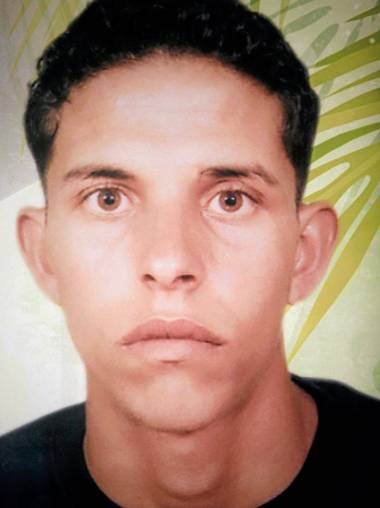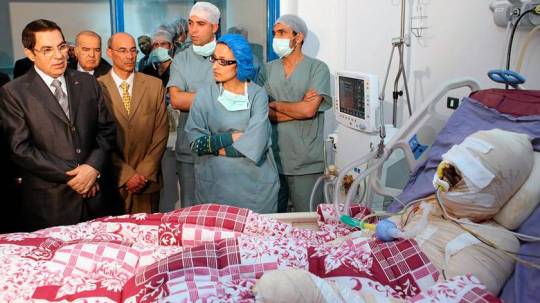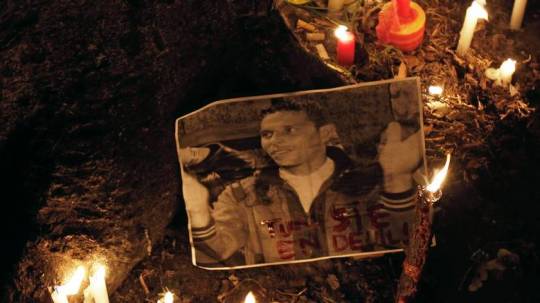The period from February 1 to 11, is celebrated every year in Iran as the “Decade of Fajr.” February 11 is the “Islamic Revolution’s Victory Day”, a national holiday with state sponsored demonstrations in every city.
 The Iranian Revolution also known as the Islamic Revolution or 1979 Revolution, (Persian: انقلاب اسلامی, Enghelābe Eslāmi) was the event that overthrew Iran’s monarchy, the Pahlavi Dynasty under Shah Mohammad Reza Pahlavi) as it was replaced by the Islamic republic under Ayatolah Ruhollah Khomeini. The demonstrations against the Shah started already in January 1978 as it continued until December. The Shah did not see any other solution but to leave for exile in mid January 1979 before Ayatollah Khomeini returned to Teheran.
The Iranian Revolution also known as the Islamic Revolution or 1979 Revolution, (Persian: انقلاب اسلامی, Enghelābe Eslāmi) was the event that overthrew Iran’s monarchy, the Pahlavi Dynasty under Shah Mohammad Reza Pahlavi) as it was replaced by the Islamic republic under Ayatolah Ruhollah Khomeini. The demonstrations against the Shah started already in January 1978 as it continued until December. The Shah did not see any other solution but to leave for exile in mid January 1979 before Ayatollah Khomeini returned to Teheran.
The royal monarchy collapsed shortly after on February 11 when rebel troops overwhelmed troops that stayed loyal to the Shah in an armed street fight. On April 1, 1979, the Iranians voted by national referendum to become an Islamic State and Khomeini became the Supreme Leader of the country on December 1979.
Background of the revolution
The revolution started as being a populist and nationalist revolution and later became Shi’a Islamic. It was against the Westernizing and secularism efforts of the Western supported Shah and as the Iranians claimed, a puppet of the United States whose culture was impacting on Iran. The Shah’s regime was also known as being oppressive, brutal, corrupt and very extravagant that brought shortages and inflation to the country.
Ruhollah Khomeini
 The leader of the Iranian revolution and Shi’a cleric Ayatollah Ruhollah Khomeini first came to political prominence in 1963 when he led opposition to the Shah and his “White Revolution”, a program of reforms to break up landholdings (including those owned by religious foundations) and allow religious minorities to hold government office. This led to the arrest of Khomeini in 1963 after he declared that the Shah was a “wretched miserable man who had embarked on the destruction of Iran.” He had preached that revolt and martyrdom against injustice and tyranny was a part of Shi’a Islam. Three days of major riots followed throughout Iran as 15,000 supporters of Khomeini died in police fire. Khomeini was later released after 8 months of house arrest and continued on condemning the regime’s close cooperation with Israel and USA. In November 1964, Khomeini was re-arrested and sent into exile where he remained for 14 years until the revolution day.
The leader of the Iranian revolution and Shi’a cleric Ayatollah Ruhollah Khomeini first came to political prominence in 1963 when he led opposition to the Shah and his “White Revolution”, a program of reforms to break up landholdings (including those owned by religious foundations) and allow religious minorities to hold government office. This led to the arrest of Khomeini in 1963 after he declared that the Shah was a “wretched miserable man who had embarked on the destruction of Iran.” He had preached that revolt and martyrdom against injustice and tyranny was a part of Shi’a Islam. Three days of major riots followed throughout Iran as 15,000 supporters of Khomeini died in police fire. Khomeini was later released after 8 months of house arrest and continued on condemning the regime’s close cooperation with Israel and USA. In November 1964, Khomeini was re-arrested and sent into exile where he remained for 14 years until the revolution day.
Away from Iran, Khomeini developed the ideology of velayat-e faqih (guardianship of the jurist) as government, that Muslims (in fact everyone) required a “guardianship,” in the form of rule or supervision by the leading Islamic jurist or jurists. Such rule was even “more necessary than prayer and fasting” in Islam, as it would protect Islam from deviation from traditional Sharia law, and in so doing eliminate poverty, injustice, and the “plundering” of Muslim land by foreign non-believers. This ideology, spread through his book Islamic Government, mosque sermons, smuggled cassette speeches by Khomeini and his network consisting of students and traditional business leaders.
The first militant anti Shah demonstrations happened in October 1977, after the death of Khomeini’s son Mostafa. The protesters were a few hundred but increased into several thousands. In January 1978, the army was sent into Qom were religious leaders and students were demonstrating. The protests ended with the death of many students. The cycle repeated itself, and on March 29, protests began across the nation. Luxury hotels, cinemas, banks, government offices, and other symbols of the Shah regime were destroyed; again security forces intervened, killing many. On May 10 the same occurred. Security forces were unable to deal with protests and demonstrations and the large size of anti Shah Movement showed that there were “too many to arrest,” overwhelming the security forces.
Black Friday
A new prime minister, Jafar Sharif-Emami, was installed in late August and reversed some of the Shah’s policies. Casinos were closed, the imperial calendar abolished, activity by political parties legalized — to no avail. By September, the nation was rapidly destabilizing, and major protests were becoming a regular occurrence. The Shah introduced martial law, and banned all demonstrations but on September 8 thousands of protesters gathered in Tehran. Security forces shot and killed dozens, in what became known as Black Friday.
Departure of shah
 By December 1978, Shah’s position had deteriorated so much that soon he would “only be allowed to stay in Iran,” and he was turned by the opposition. On January 16, 1979, the Shah and the empress left Iran. Scenes of joy followed and within hours, the Pahlavi Dynasty was destroyed. Bakhtiar dissolved SAVAK, freed political prisoners, ordered the army to allow mass demonstrations, and promised free elections and invited Khomeinists and other revolutionaries into a government of “national unity”. After stalling for a few days Bakhtiar allowed Ayatollah Khomeini to return to Iran, asking him to create a Vatican-like state in Qom and calling upon the opposition to help preserve the constitution.
By December 1978, Shah’s position had deteriorated so much that soon he would “only be allowed to stay in Iran,” and he was turned by the opposition. On January 16, 1979, the Shah and the empress left Iran. Scenes of joy followed and within hours, the Pahlavi Dynasty was destroyed. Bakhtiar dissolved SAVAK, freed political prisoners, ordered the army to allow mass demonstrations, and promised free elections and invited Khomeinists and other revolutionaries into a government of “national unity”. After stalling for a few days Bakhtiar allowed Ayatollah Khomeini to return to Iran, asking him to create a Vatican-like state in Qom and calling upon the opposition to help preserve the constitution.
Khomeini’s return and fall of the monarchy
On February 1, 1979 Ayatollah Khomeini returned to Tehran in a chartered Air France Boeing 747. The welcoming crowd of several million Iranians was so large that he was forced to take a helicopter after the car he was being transported in from the airport was overwhelmed by an enthusiastic welcoming crowd. Khomeini was now not only the undisputed leader of the revolution, he had become what some called a “semi-divine” figure, greeted as he descended from his airplane with cries of “Khomeini, O Imam, we salute you, peace be upon you.” Crowds were now known to chant “Islam, Islam, Khomeini, and We will follow you.”

Khomeini appointed his own competing interim Prime Minister Mehdi Bazargan on February 4, ‘with the support of the nation’ and commanded Iranians to obey Bazargan as a religious duty. “Through the guardianship (Velayat) that I have from the Holy Lawgiver, I hereby pronounce Bazargan as the Ruler, and since I have appointed him, he must be obeyed. The nation must obey him. This is not an ordinary government. It is a government based on the Sharia. Opposing this government means opposing the Sharia of Islam. Revolt against God’s government is a revolt against God. Revolt against God is blasphemy.
As Khomeini’s movement gained power, soldiers began to defect to his side. On February 9, a fight broke out between loyal Immortal Guards and the pro-Khomeini rebel Homafaran element of the Iranian Air Force, with Khomeini declaring jihad on loyal soldiers who did not surrender. Revolutionaries and rebel soldiers gained the upper hand and began to take over police stations and military installations, distributing arms to the public. The final collapse of the provisional non-Islamist government came at February 11 when the Supreme Military Council declared itself “neutral in the current political disputes… in order to prevent further disorder and bloodshed.” Revolutionaries took over government buildings, TV and Radio stations, and palaces of Pahlavi dynasty. March 30 and 31, 1979, a referendum to replace the monarchy with an Islamic Republic passed through with 98% votes in favour of the replacement.
For further reading, you can read my other blog article about February 1st, Return of Khomeini https://hatefsvoice.wordpress.com/2011/02/01/february-1st-1979-irans-spiritual-leader-returns-from-exile/










